Maintenance Tips
- Regularly inspect UPS batteries for signs of corrosion, leaks, or swelling.
- Test the UPS system periodically to ensure it functions correctly during a power outage.
- Keep the UPS unit clean and free from dust buildup, as this can affect cooling and performance.
- Verify that the UPS is adequately ventilated to prevent overheating.
- Follow the manufacturer’s recommended maintenance schedule for servicing and battery replacement.
- Change the oil and oil filter according to the manufacturer’s recommendations.
- Replace air filters regularly to ensure proper airflow and engine performance.
- Check coolant levels and top up as needed to prevent overheating.
- Inspect fuel lines, connections, and tanks for leaks or damage.
- Test the generator periodically to ensure it starts and operates correctly.
- Clean the stabilizer’s enclosure regularly to prevent dust buildup.
- Check for loose connections and tighten them if necessary.
- Verify that the stabilizer is providing the correct output voltage under varying load conditions.
- Calibrate the stabilizer periodically according to the manufacturer’s instructions.
- Replace worn-out components or faulty voltage regulation circuits promptly.
- Inspect solar panels for damage, cracks, or debris that may obstruct sunlight.
- Clean panels regularly to remove dirt, dust, and bird droppings that can reduce efficiency.
- Check wiring connections for signs of corrosion or damage.
- Monitor inverter performance and address any issues promptly.
- Trim nearby vegetation that may shade the solar panels.
- Keep the inverter enclosure clean and free from debris.
- Ensure proper ventilation to prevent overheating.
- Check electrical connections for tightness and corrosion.
- Monitor inverter performance and troubleshoot any errors or faults promptly.
- Follow the manufacturer’s recommendations for firmware updates and maintenance tasks.
- Regularly inspect tires for wear and tear and replace them when necessary.
- Check hydraulic fluid levels and top up if needed.
- Lubricate moving parts according to the manufacturer’s recommendations.
- Inspect brakes and replace brake pads as required.
- Ensure that safety features such as horns, lights, and seat belts are functioning correctly.
- Train operators on proper operation and handling to prevent unnecessary wear and damage.
- Clean and lubricate moving parts regularly to prevent friction and wear.
- Inspect handrails for signs of damage and replace them if necessary.
- Check for loose or worn-out steps and replace them promptly.
- Test safety sensors and emergency stop buttons regularly.
- Schedule routine maintenance with qualified technicians to inspect motors, gearboxes, and other critical components.
- Train maintenance personnel on proper servicing procedures and safety protocols.
It’s important to adhere to manufacturer guidelines and maintenance schedules for all equipment. Regular inspections and proactive maintenance can help ensure the safe and efficient operation of these systems, minimize downtime, and extend their lifespan. Additionally, consider implementing a comprehensive maintenance management system to track maintenance activities, schedule tasks, and manage spare parts inventory effectively.

